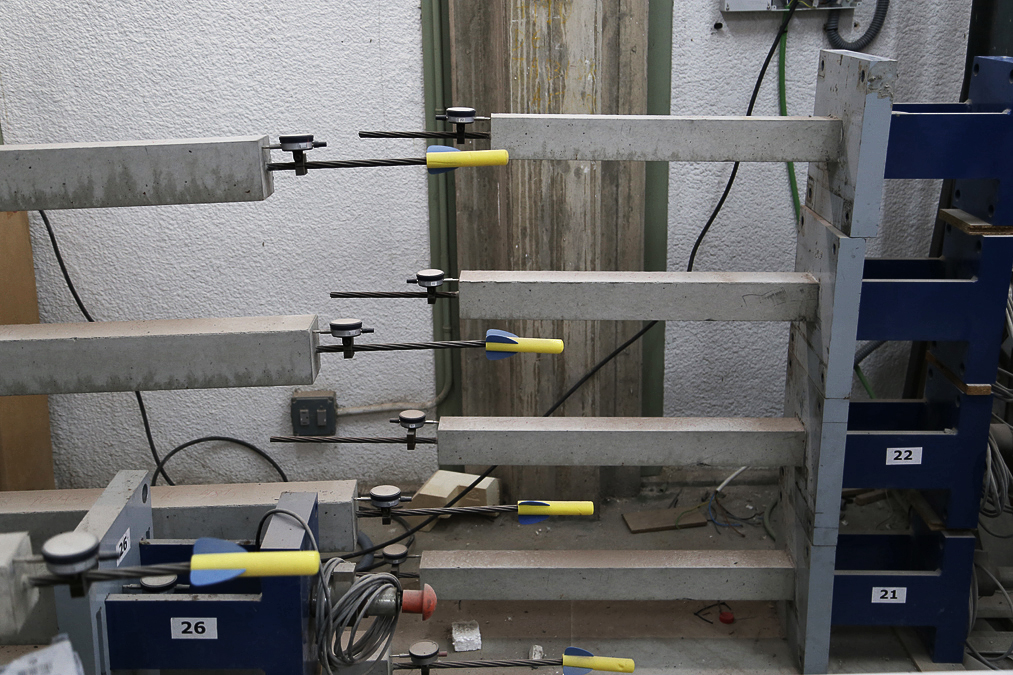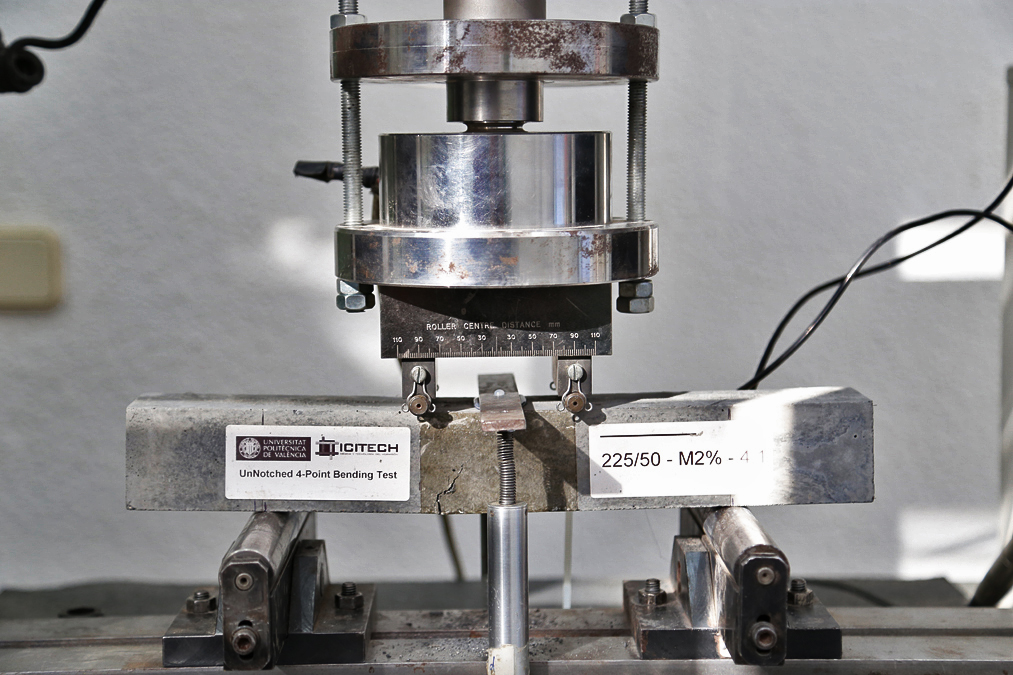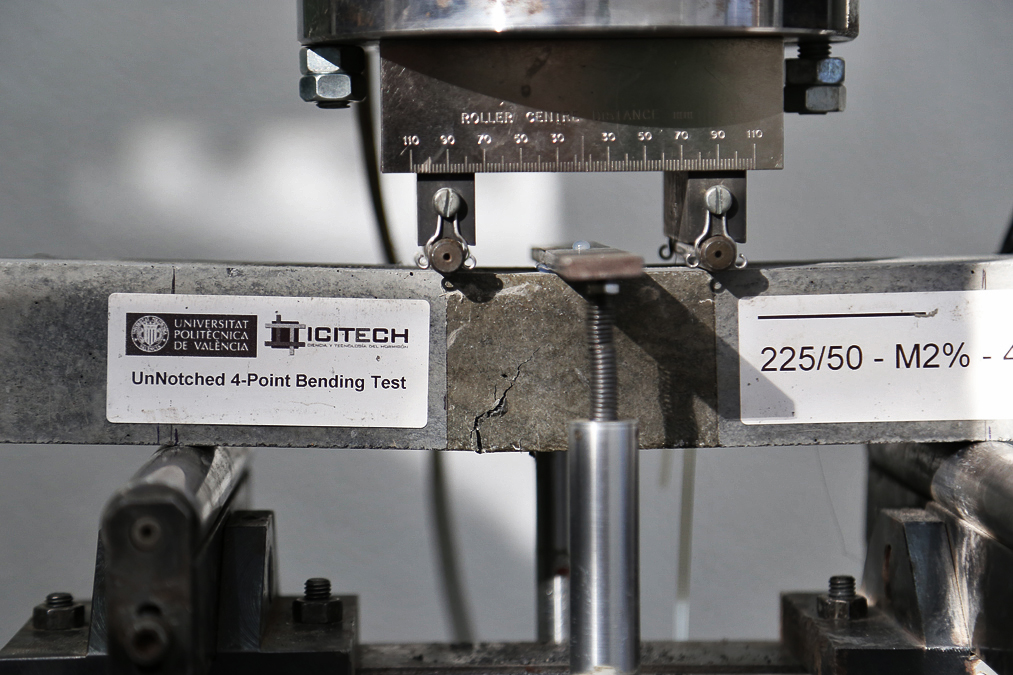Fiber concrete: A solution for every need
Principal researcher: PEDRO SERNA ROS
Team members:
- MARÍA JOSÉ PELUFO CARBONELL
- ALBERTO DOMINGO CABO A.
- CARLOS MANUEL LÁZARO FERNÁNDEZ
- JOSÉ ROCÍO MARTÍ VARGAS
- EMILIO JOSÉ GARCÍA TAENGUA
- GIOVANNI PLIZZARI
- RAÚL LUIS ZERBINO
- GABRIEL DE OLIVEIRA RIBEIRO
Funding Agency:
Duration: 12/05/2008 a 12/01/2011
Reference: BIA 2012-35776
EPOS
Consellería de infraestructuras del transporte.
VIAS Y CONSTRUCCIONES S.A.
CMD Domingo y Lázaro Ingenieros S.L.
NV BEKAERT SA
PREVALESA ICOSA

Summary
This project can be considered as the continuity of the approach of the main line of research of the applicant group of the last 5 years: fiber concrete. It arises with the intention of developing a series of aspects on which we consider that there is still significant room for maneuver to tackle research of an important scientific level, but of short-term engineering applicability.
Some of the most important issues are:
The study of the delayed mechanical behavior of HF in aggressive environments, as it usually happens in some pavements where steel and synthetic fibers are competing.
Advances in calculation criteria and design of shear concrete elements. At this point, it is intended to achieve very precise objectives and to highlight factors that are little used in current formulations, but that give rise to different responses.
Definition of constitutive equations and their implementation at the material and structural level for the analysis of the behavior of concrete against shear stress. For this, a powerful test method can be developed that can be standardized.
Study of the adherence of passive reinforcements raises great possibilities due to its influence on the design of elements and especially of construction details.
The study of very high-resistance concretes focuses on the fact that with this material new design criteria can be proposed, and on new knowledge challenges since the way of working can look more like a metal structure than a traditional concrete one. That is why we have proposed to analyze second order phenomena. The option of contemplating screwed joints in these structures is also understood in the scope of the aforementioned trend.
Finally, constructive designs are proposed not with the idea of applying fiber concrete to classical construction models, but rather trying to define forms, design or calculation criteria that apply the properties inherent to this type of concrete.
It is intended to address the topic in order to transmit knowledge in an assumable way at the technical office or company level, whether it is prefabricated as a construction company. In this way the knowledge will be applied in the industry. Incorporate new technologies on the subject in Spain.


Objetives
With the experience gained in previous projects, this project aims to develop a series of aspects that allow us to wait for clarification at a sufficient level to allow its dissemination and application with still clear expected benefits. It is accepted that properties such as punching, grading, adhesion or confinement are improved, but this phenomenon is not quantified, and in relation to creep it is recommended to “experiment”. The same line follows the corresponding annex of the model code. Consequently, we find a series of advantages that fibers provide to behavior that can lead to significant savings by being able to consider their contributions whenever we are able to assess them.
These advantages can be found in addition to the direct aspects discussed and in their influences on the derived constructive details (coatings, secondary reinforcements, support designs). In addition, since the concept of the material can recommend applications with structural elements very different from the concept of beam, the idea of structural design with redistributions seems essential. The modeling of shear behavior with powerful methods that allow a basic study of the phenomenon and not just adapt the criteria of traditional concrete must also be approached to achieve maximum effectiveness. Finally, it is intended to cover the UHPC in order to provide the basis to analyze new design criteria and cover calculation criteria caused by foreseeable failure modes that traditional concrete structural elements did not consider as improbable.




